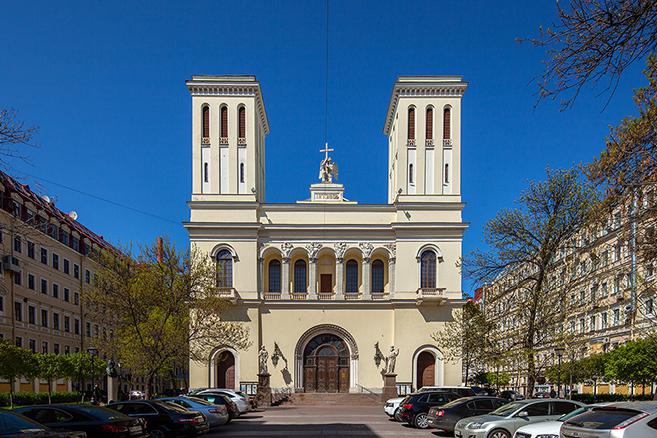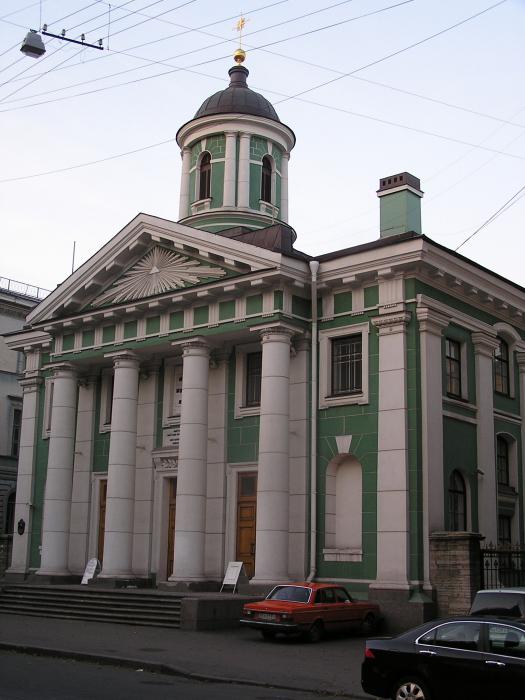The indispensable and obligatory rule of any religion in the education of man has always been the development of spirituality and benevolence. Orthodoxy, Lutheranism, Buddhism, and many other areas basically raise the spirit and delight the eye, influencing people not only with the content of sermons and prayers, but also with the form expressed by the magnificent architecture that distinguishes the church of St. Petersburg - diverse, majestic and amazing.
Colossal part in architectural heritage
Temples, cathedrals and churches of St. Petersburg are an interesting collection of masterpieces of different architects of different eras. Composing a huge layer of unique architecture of the Northern Capital, religious buildings have a rich historical and cultural value, amaze the imagination with their incredible ability to fascinate, soothe and inspire confidence in the future. As traditional places of excursion and tourist pilgrimage, the churches of St. Petersburg rightfully occupy a special place in the architectural abundance of the city. Who has ever been struck by the greatness of Isaac, the severity of Smolny, the amazing painting of the icons of the Kazan Cathedral? Is it really possible to remain indifferent, contemplating the amazing painting of the walls of Orthodox churches - witnesses of past take-offs and shocks, great victories and woeful defeats?
Chesme Church
The defeat of the Turkish fleet at the Chesme battle in 1770 was devoted to the construction of the most beautiful temple, called Chesmensky. Built in an interesting pseudo-Gothic style, surprisingly elegant, striking in its lightness and unusualness, the Chesmenskaya Church rises not far from Moskovsky Prospekt. An amazingly light construction in pink and white with towering pointed spiers of towers and tall narrow windows was a symbol of a significant victory of Russian weapons, the most significant since the conquests of Peter the Great.
The history of the temple
In honor of this naval victory, the highest command establishes a silver medal depicting the climax of the attack by the Russian flotilla of Turkish ships. Several memorial places are created, united by the victorious name “Chesme”: the Gatchina obelisk, the rostral column in the Catherine’s pond of Tsarskoye Selo Park, the hall of the Peterhof Palace. But the Chesme Church in St. Petersburg is a glorious ode to the victory achieved by the architect Yu. M. Felten, the author of the Hermitage and the exquisite fence of the Summer Garden. The temple was laid in front of the Kikerikeksensky palace, later also called Chesmensky, in 1777, and consecrated on the 10th anniversary of the victory - in 1780. The magnificent ensemble of the palace and the temple gave the name of the surrounding area, it also began to be called Chesmoy. All the rulers of Russia were awestruck and loved these places: Catherine the Great visited the Chesme Church twice a year, coming to Shrovetide and temple festivals, Nicholas I, by his decree, established an almshouse for the disabled in the palace war with Napoleon, thereby giving the palace and the temple a new life with the subsequent construction of several new outbuildings and three chapels. The curator of the almshouse was the Alexander Committee of the Wounded, and the Grand Dukes were trustees. The celebratory services and luxurious dinners established by Catherine II with invited guests became traditional and continued until the October Revolution, when the almshouse was closed by placing the Chesmenka Forced Labor Camp in the Chesme Palace and using the church building as a warehouse.
In the 1970s, a branch of the Central Naval Museum “Chesme Victory” was housed in the church building, which was restored after the war.
The second life of the church began with the transfer of the building of the St. Petersburg Diocese in 1990 and the first prayer service, served on the last day of the year, while still outside the church premises. At the end of the 20th century, the iconostasis was restored in accordance with the original project, and the temple was consecrated.
Church of the Smolensk Icon of the Mother of God
The creation of this church began with the official establishment of the Smolensk cemetery on Vasilievsky Island near the Black River (Smolenka) in 1738. Laid in 1758, a wooden church was built and consecrated in 1760. Both the cemetery and the church owe their name to the settlements of Smolensk workers who arrived to build the city during its construction. So the first Smolensk church arose. St. Petersburg, growing and developing, felt the need for the construction of stone buildings, and at the end of the 19th century, according to the project of architect A. Ivanov, a stone church was built in the best traditions of Russian classicism with a magnificent two-tier bell tower.
The construction of this temple is inextricably linked with the name of the famous Saint Blessed Xenia of Petersburg, who, after the shock from the death of her beloved husband, handed out all the property and wandered around the city, helping the townspeople waiting for her help during the day, and secretly worked at night on the construction of the church, raising building bricks to the woods. The saint is so revered in Russia that the chapel of Ksenia of Petersburg, located near the Smolensk Church, is a special place of worship and pilgrimage for believers.
Smolensk Church - famous Russian shrine
The temple was built in 1792. Over the following years, the Smolensk Church, like many churches in St. Petersburg, was repeatedly completed, decorated and improved. So, in 1809, the northern aisle was adjoined to the building, in 1833 - the Ilyinsky aisle, in 1892 - the chapel of John the Baptist, with an placed iconostasis, executed by M. Vasiliev in the best Byzantine traditions. The facades of the temple were decorated with porticoes. The library has opened.
Time and the Bolsheviks who came to power spared the temple. It did not function for only 6 years - from 1940 to 1946. Since 1947, church services have not stopped. In the anniversary year of the 200th anniversary of the temple, the southern aisle was erected and consecrated in the name of St. Xenia of Petersburg.
Lutheran Church

The northern capital, like many megacities of the world, is very democratic, and along with Orthodox churches it is decorated with religious buildings of other religions. The Lutheran Church in St. Petersburg arose long ago. Although this religion was not encouraged by Peter the Great, he was relying precisely on Lutherans when reforming the country, therefore during his reign more than 20 thousand people of the Lutheran faith arrived in the country, and the so-called “church” was built privately. The first public Lutheran church of St. Peter began to be erected in 1728. It successfully operated for 100 years, after which a new church building was built in the tradition of the Romanesque basilica according to the project of architect A. Bryullov, the brother of an outstanding painter, who later decorated the altar with the painting “Crucifixion”. A magnificent organ and unique Westphalian bells were installed. Until the October Revolution, the building was rebuilt and improved. The building’s architecture is unusual - some heavyness is erased by the high three-tier towers rushing upward, decorating corners, and the angel figure crowning the structure, giving lightness. The bas-relief images of the evangelists and the figures of the apostles Peter and Paul on the pedestals in front of the entrance to the temple complete the big picture.

Surprisingly, the temple was active until 1938. After closing, the church became a warehouse, and in 1956 it was turned into a pool, undoubtedly causing huge damage. With the onset of democracy in 1992, the temple building was transferred to the German community and today is the main active cathedral of the Evangelical Lutheran Church of Russia.
The temples and churches of St. Petersburg are amazing, diverse and interesting. A map of the city will offer a visit to any of these unique structures.